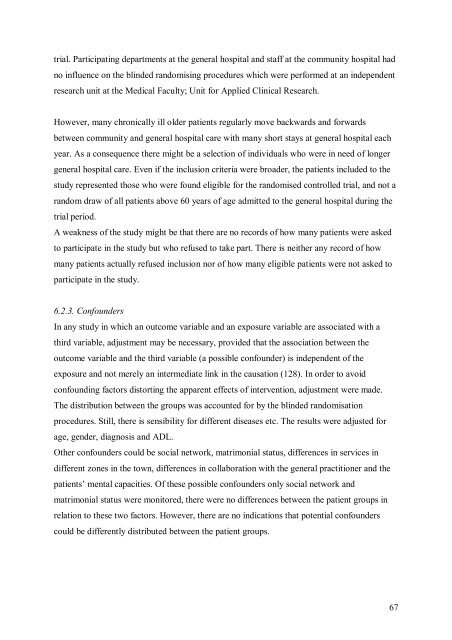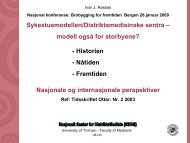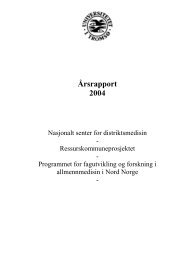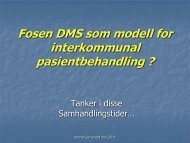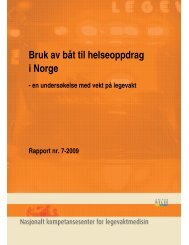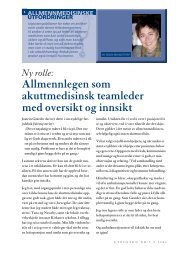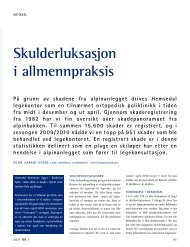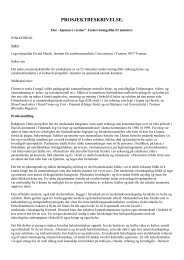Helge Garåsen The Trondheim Model - NSDM
Helge Garåsen The Trondheim Model - NSDM
Helge Garåsen The Trondheim Model - NSDM
Create successful ePaper yourself
Turn your PDF publications into a flip-book with our unique Google optimized e-Paper software.
trial. Participating departments at the general hospital and staff at the community hospital had<br />
no influence on the blinded randomising procedures which were performed at an independent<br />
research unit at the Medical Faculty; Unit for Applied Clinical Research.<br />
However, many chronically ill older patients regularly move backwards and forwards<br />
between community and general hospital care with many short stays at general hospital each<br />
year. As a consequence there might be a selection of individuals who were in need of longer<br />
general hospital care. Even if the inclusion criteria were broader, the patients included to the<br />
study represented those who were found eligible for the randomised controlled trial, and not a<br />
random draw of all patients above 60 years of age admitted to the general hospital during the<br />
trial period.<br />
A weakness of the study might be that there are no records of how many patients were asked<br />
to participate in the study but who refused to take part. <strong>The</strong>re is neither any record of how<br />
many patients actually refused inclusion nor of how many eligible patients were not asked to<br />
participate in the study.<br />
6.2.3. Confounders<br />
In any study in which an outcome variable and an exposure variable are associated with a<br />
third variable, adjustment may be necessary, provided that the association between the<br />
outcome variable and the third variable (a possible confounder) is independent of the<br />
exposure and not merely an intermediate link in the causation (128). In order to avoid<br />
confounding factors distorting the apparent effects of intervention, adjustment were made.<br />
<strong>The</strong> distribution between the groups was accounted for by the blinded randomisation<br />
procedures. Still, there is sensibility for different diseases etc. <strong>The</strong> results were adjusted for<br />
age, gender, diagnosis and ADL.<br />
Other confounders could be social network, matrimonial status, differences in services in<br />
different zones in the town, differences in collaboration with the general practitioner and the<br />
patients’ mental capacities. Of these possible confounders only social network and<br />
matrimonial status were monitored, there were no differences between the patient groups in<br />
relation to these two factors. However, there are no indications that potential confounders<br />
could be differently distributed between the patient groups.<br />
67


